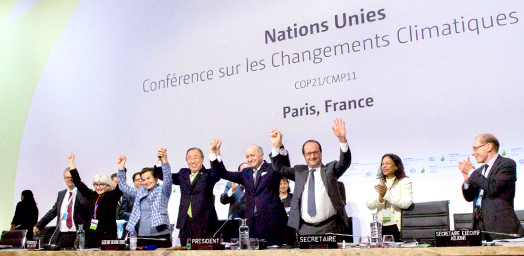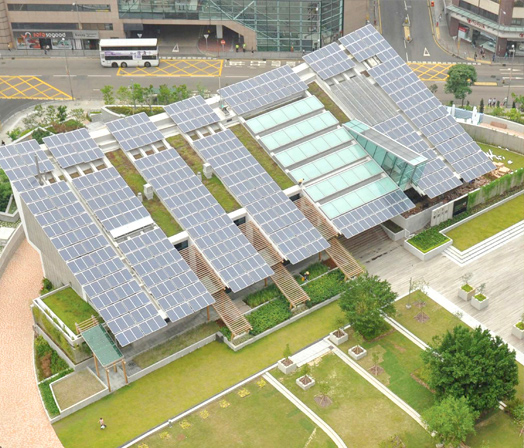
All Hands on Deck on Climate Change
For most of us, a rise of 2°C is a tiny difference in temperature, not noticeable enough for us to necessitate the opening of a window. But scientists have warned that as the CO2 level in the atmosphere goes up, an increase in the Earth’s temperature by even this amount can lead to catastrophic effects all over the world.
Without timely actions, the world is likely to become warmer by 2°C as early as 2040, and by 4°C by the end of this century. The global community is showing determination to prevent that from happening.
The Historic Moment
On 12 December 2015, just before 7:30 pm in Paris, envoys from almost 200 countries burst into cheers, hugged each other, and shed tears of joy at the final conference of the COP21, or the United Nations conference on climate change, as Laurent Fabius, foreign minister of France, hit the table with a gavel and declared the Paris Agreement had been formally adopted.
Signed by 196 nations, the Paris Agreement is the first comprehensive global treaty to combat climate change, and will follow on from the Kyoto Protocol when the latter ends in 2020.

The accord requires any country that ratifies it to act to stem its greenhouse gas emissions in the coming century, with the goal of peaking greenhouse gas emissions as soon as possible and continuing the reductions as the century progresses. Countries will aim to prevent global temperatures from rising more than 2°C by 2100 with an ideal target of keeping temperature rise below 1.5°C.
Rich and poor countries alike will pledge actions on a transition to a cleaner energy future. Developed countries will funnel at least USD 100 billion a year to developing countries from 2020 to help them make the costly shift from fossil fuels to green energy and shore up their defences against climate change impacts such as drought and storms.

Hong Kong’s Pledges
Three weeks ahead of the Paris climate change summit, the Environment Bureau unveiled the Hong Kong Climate Change Report 2015, outlining the government's work and aims in responding to climate change.
Hong Kong took into account China’s national commitment to set the city’s own local target. In 2009, China committed to lower its overall carbon intensity by 40–45% from the 2005 level by 2020. In 2010, Hong Kong put forward its own target to reduce the carbon intensity by 50–60% from the 2005 level by 2020. As of 2012, Hong Kong’s carbon intensity had dropped 19% using 2005 as the base. It is expected to reach a reduction of about 50% by 2020.
Hong Kong also pledged to achieve the reduction target of 40% in energy intensity by 2025 using 2005 as the base year. This is an ambitious target because population and energy usage are still projected to continue to rise. Achieving the energy saving target is equivalent to reducing about 3.36 million tonnes of CO2 per annum.
CUHK’s Commitment
CUHK is the first local tertiary institution to have committed to tackling climate change. It set up a University Steering Committee on Environment in 2000, which was expanded into a Committee on Campus Environment in 2008 and merged with the Committee on Campus Sustainability in 2014.
In early 2008, CUHK started to conceive its Campus Master Plan (CMP). It set goals to reduce energy consumption and greenhouse gas emissions per capita by at least 25% and 20% respectively by 2025, from the campus base figures of 2005.
In 2012, medium-term targets were established as performance indicators for the University’s sustainability efforts from 2012 to 2017. These include an 8% reduction of energy consumption and a 10% reduction of greenhouse gas emissions. It was also specified that all official cars/vans/scooters shall be replaced with environmentally-friendly models at the end of their lifespan.
A pioneer of renewable energy generation among local universities, CUHK currently employs various technologies on campus, examples being evacuated tube solar collectors, photovoltaic panels, hydraulic rams with an estimated total capacity of over 1,300,000 kWh per year, and has put into trial novel renewable energy technologies like the CIGS thin film solar cell developed by the Department of Physics.

Paris isn’t the end of the road, since climate change is a continuing challenge faced by each one of us—as individuals, in our communities, and at our places of study and work. Before leaving Paris, US President Barack Obama asserted, ‘This one trend, climate change, affects all trends.’ This trend will only be halted or reversed by global action.


